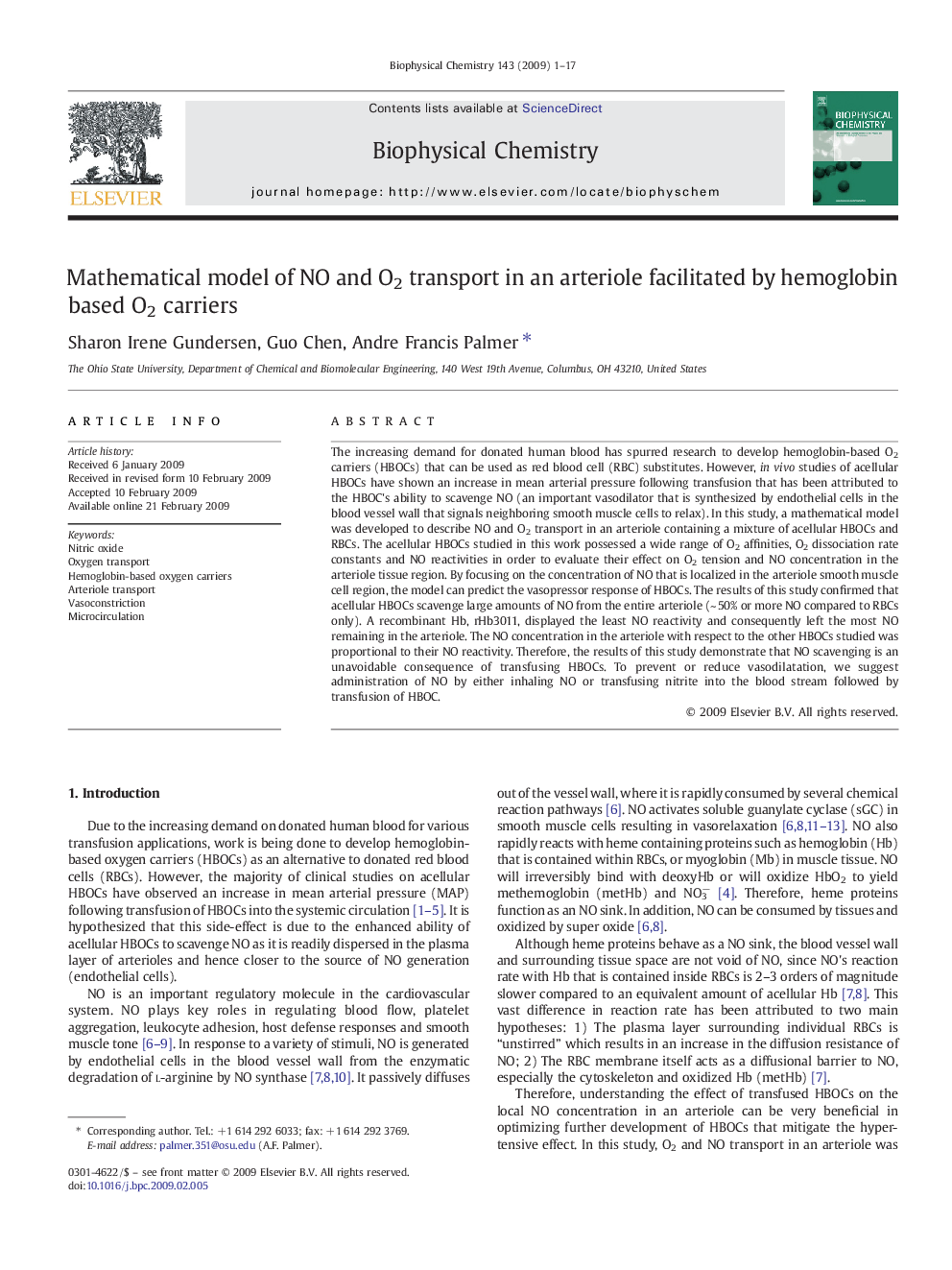| Article ID | Journal | Published Year | Pages | File Type |
|---|---|---|---|---|
| 5371683 | Biophysical Chemistry | 2009 | 17 Pages |
The increasing demand for donated human blood has spurred research to develop hemoglobin-based O2 carriers (HBOCs) that can be used as red blood cell (RBC) substitutes. However, in vivo studies of acellular HBOCs have shown an increase in mean arterial pressure following transfusion that has been attributed to the HBOC's ability to scavenge NO (an important vasodilator that is synthesized by endothelial cells in the blood vessel wall that signals neighboring smooth muscle cells to relax). In this study, a mathematical model was developed to describe NO and O2 transport in an arteriole containing a mixture of acellular HBOCs and RBCs. The acellular HBOCs studied in this work possessed a wide range of O2 affinities, O2 dissociation rate constants and NO reactivities in order to evaluate their effect on O2 tension and NO concentration in the arteriole tissue region. By focusing on the concentration of NO that is localized in the arteriole smooth muscle cell region, the model can predict the vasopressor response of HBOCs. The results of this study confirmed that acellular HBOCs scavenge large amounts of NO from the entire arteriole (~Â 50% or more NO compared to RBCs only). A recombinant Hb, rHb3011, displayed the least NO reactivity and consequently left the most NO remaining in the arteriole. The NO concentration in the arteriole with respect to the other HBOCs studied was proportional to their NO reactivity. Therefore, the results of this study demonstrate that NO scavenging is an unavoidable consequence of transfusing HBOCs. To prevent or reduce vasodilatation, we suggest administration of NO by either inhaling NO or transfusing nitrite into the blood stream followed by transfusion of HBOC.
